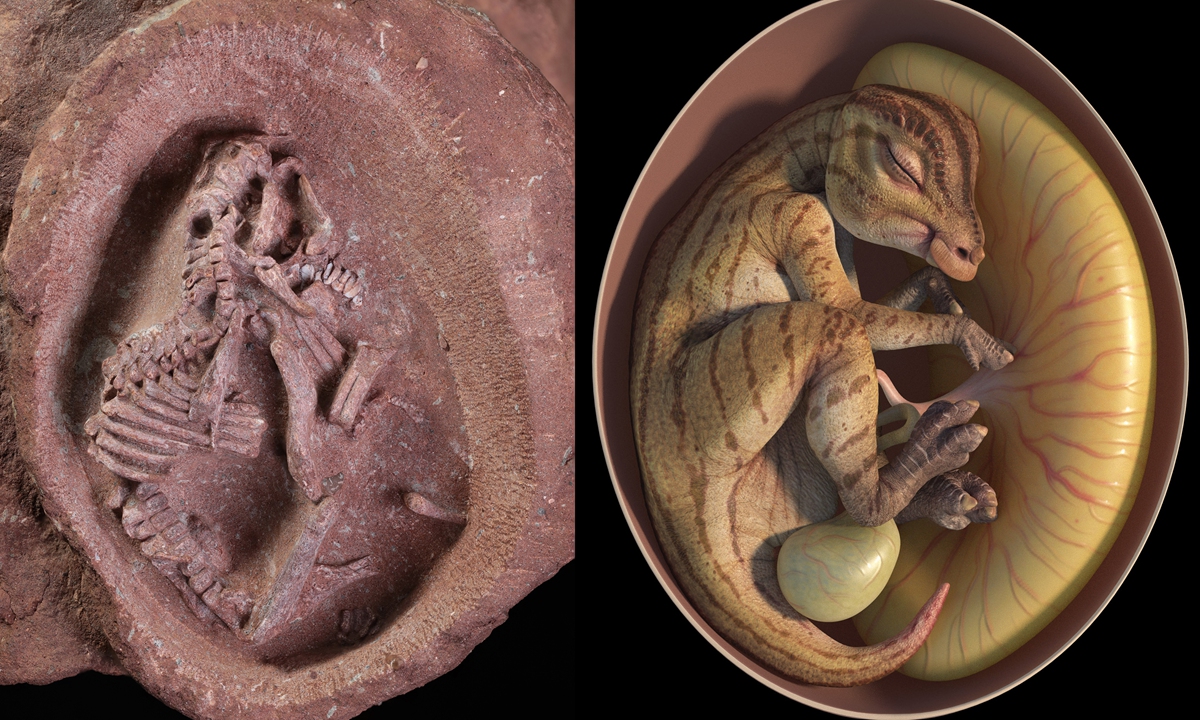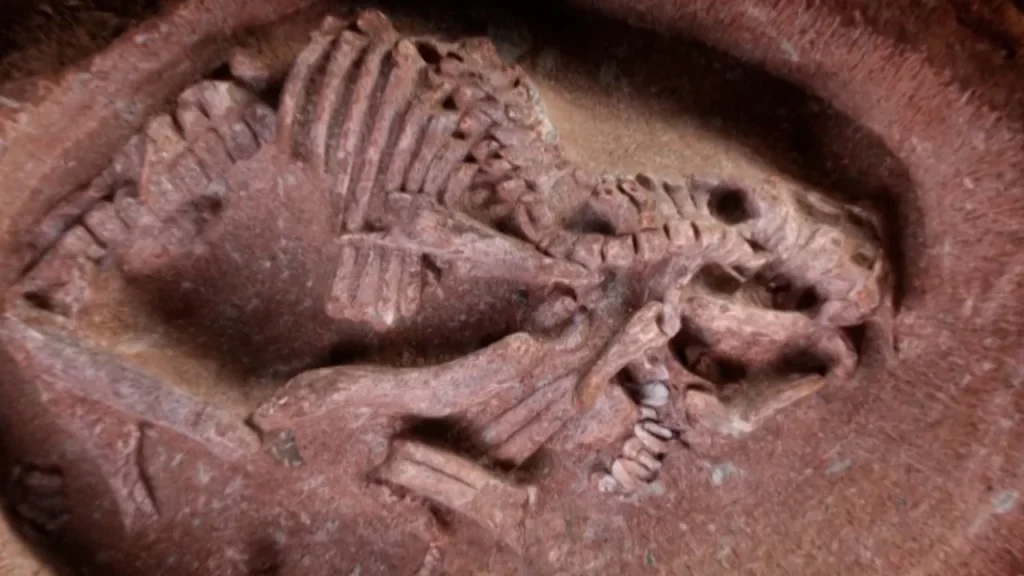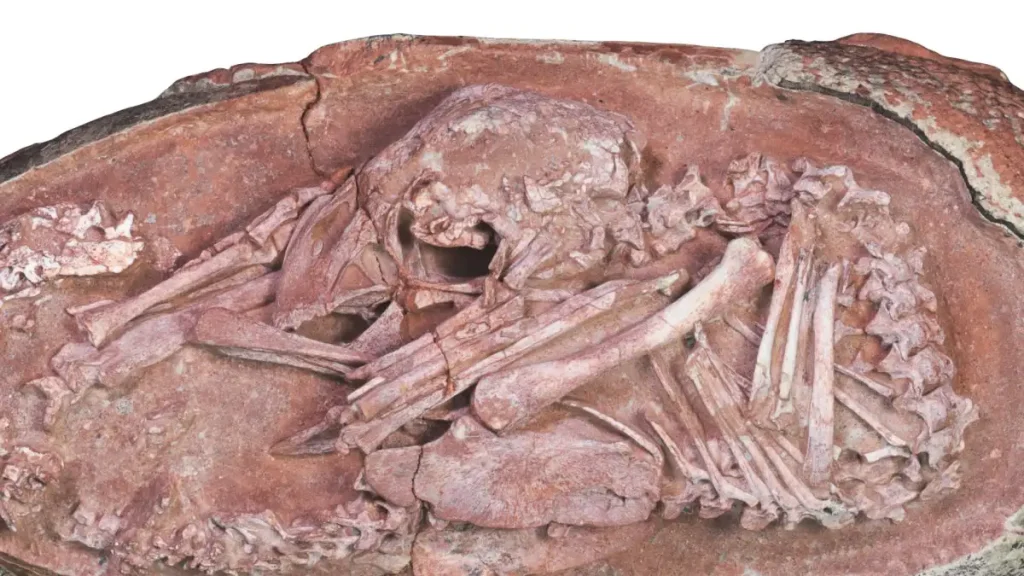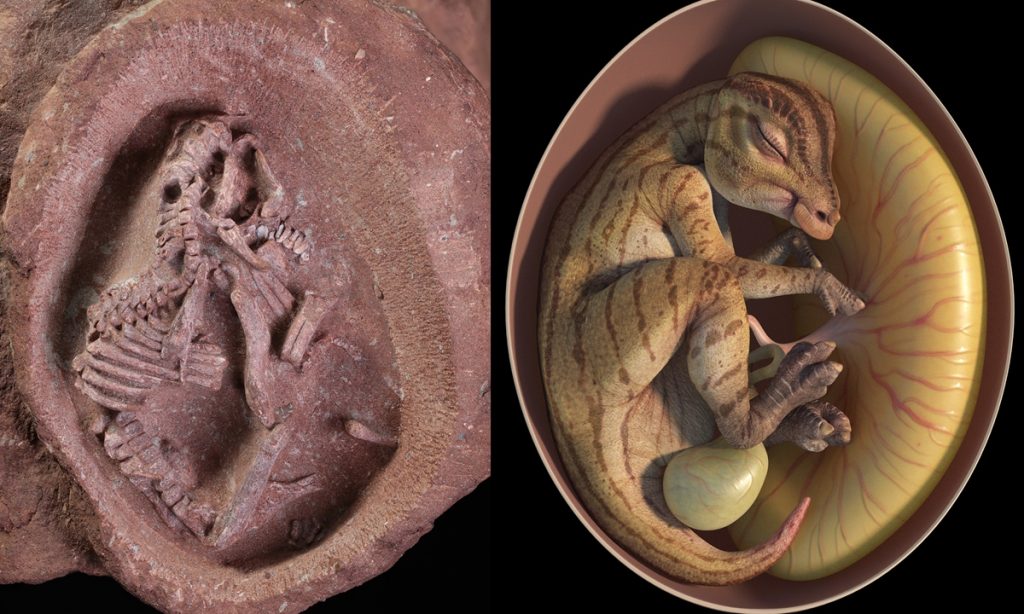
Remarkable Discovery: Preserved Dinosaur Embryo Found in a 72 Million-Year-Old Fossilized Egg, Researchers Reveal
Scientists discovered an incredibly rare baby dinosaur egg that is estimated to be a 70-million-year-old fossil.
They named it the Baby Yingliang after the name of the Chinese museum where it’s currently housed. The fossil egg preserves the embryonic skeleton of an oviraptorid dinosaur. Researchers published their findings on Tuesday and said the baby dinosaur’s posture is similar to that of a late-stage modern bird embryo.

The baby dinosaur is estimated to be about 70 million years old and a type of oviraptorosaur, a group of beaked therapod dinosaurs closely related to modern birds that lived about 130 million to 66 million years ago, according to National Geographic.
The egg was exceptionally preserved at around 7 inches long, and the baby dinosaur inside was estimated to be about 11 inches long from head to tail. Researchers believe that if it had lived, it would have grown to be about 2 to 3 meters long.

The baby fossil egg was found in China’s Jiangxi province and acquired in 2000 by Liang Liu, director of Yingliang Group, a Chinese stone company. The egg wound up in storage and wasn’t analyzed until about 10 years later during the construction of the Yingliang Stone Nature History Museum.
Skeletons of dinosaurs are rarely preserved in the embryonic stage, while the animal is unhatched from its egg. Through the discovery of Baby Yingliang, researchers from China, the U.K. and Canada were able to study the positions of the dinosaur with other previously found oviraptorid embryos. According to CNN, they concluded that they were moving and changing poses before hatching in a way similar to baby birds.

Baby birds typically move in a way called tucking, which is controlled by the central nervous system and critical for a successful hatching. Beyond the pre-hatching behavior, Zelenitsky told CNN that dinosaurs were also known to sit on top of their eggs to incubate them, similar to the way birds do.
All birds evolved directly from a group of two-legged dinosaurs known as theropods, which include the Tyrannosaurus rex and smaller velociraptors.




